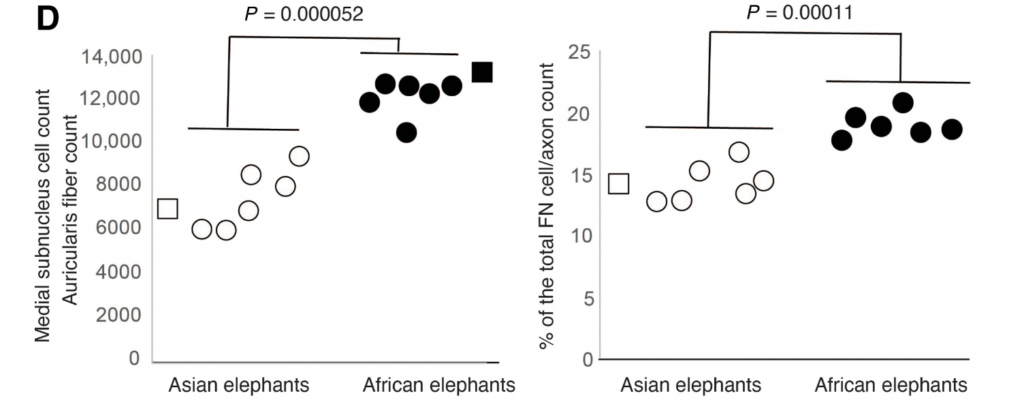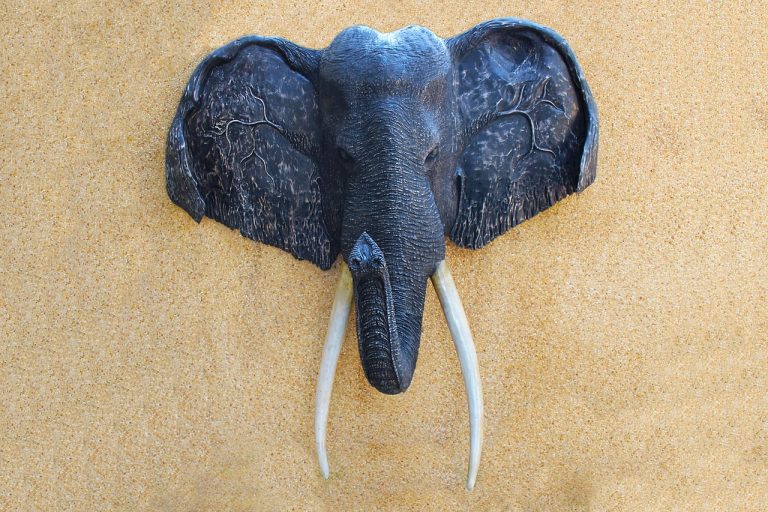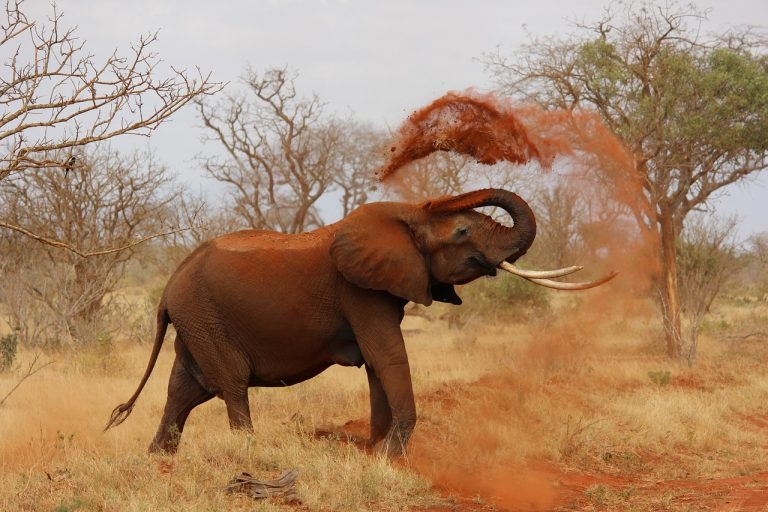Facial Nucleus Neurons in Elephants
In a study published on Science Advances, they compared facial nucleus neurons in elephants. Scientists have found that African elephants have more facial nucleus neurons than Asian elephants. What does this mean? While African and Asian elephants differ in ears and trunk, they appear to differ in brains, as well. According to the study, African elephants have 15% more facial nucleus, which controls facial muscles, than their Asian cousins.
To complete the study on facial nucleus neurons in elephants, the team observed a range of dead elephants. For the research, they analyzed four African savanna and four Asian elephants. They did not compare smaller forest elephants. The elephants came from zoos where the animal died or was euthanized. The brain analysis concluded that African elephants have around 63,000 facial nucleus neurons. Asian elephants only had about 54,000.
Why does the African elephant have more facial nucleus neurons than Asian elephants? One reason could be that African elephants’ ears are more prominent. They also flop their ears to keep cool and will erect them when provoked or charging. Asian elephants’ ears are smaller and do not erect when attacking. The research team suggests that many neurons are for their ears.

The second reason African elephants have more facial nucleus neurons is their trunk. While Asian elephants wrap their whole trunk around an object to pick it up, African elephants use it more like a hand. African elephants’ trunks have dorsal and ventral fingers, which help them quickly grab things. They are able to “pinch” items and pick them up. Asian elephants only have one finger on the trunk. Due to this, they use the wrap/grasp strategy to pick things up. This could be the reason why facial nucleus neuron in elephants differ so much.
While the study was done on a relatively small sample, it brought big results. Both elephants have a large amount of facial nucleus neuron counts. The only mammal that has more are dolphins. The data was collected and compared with other research that was done around three decades.







